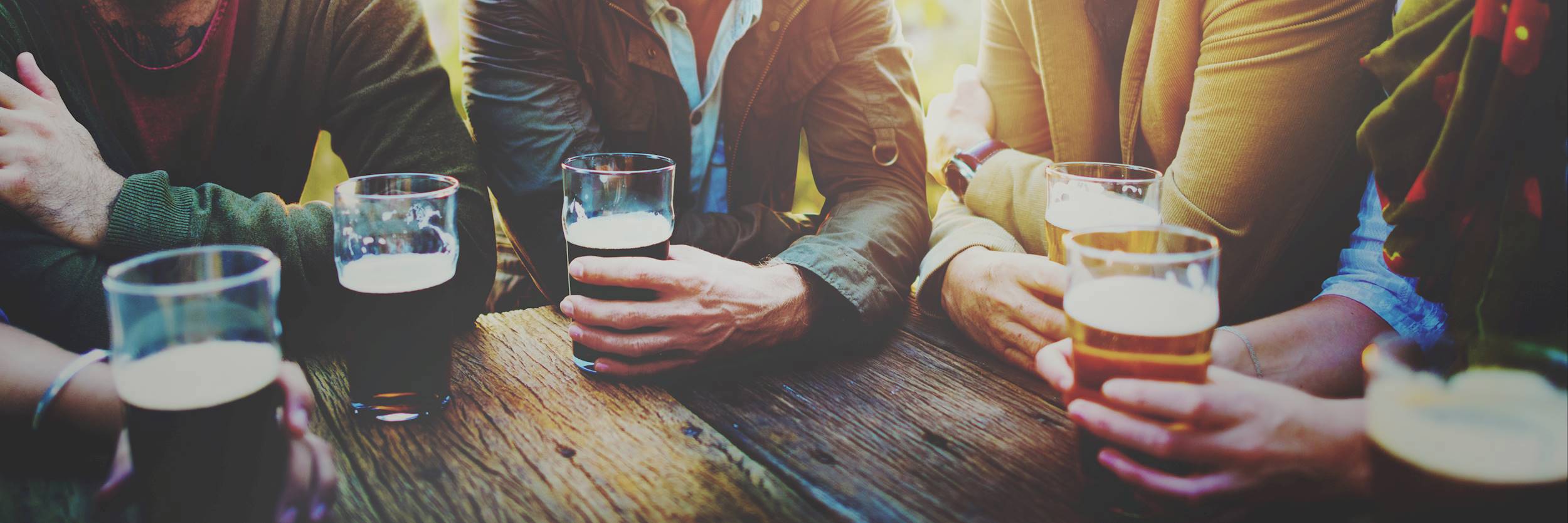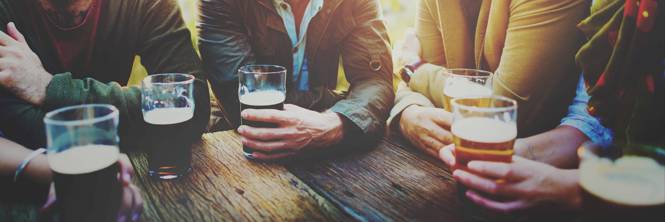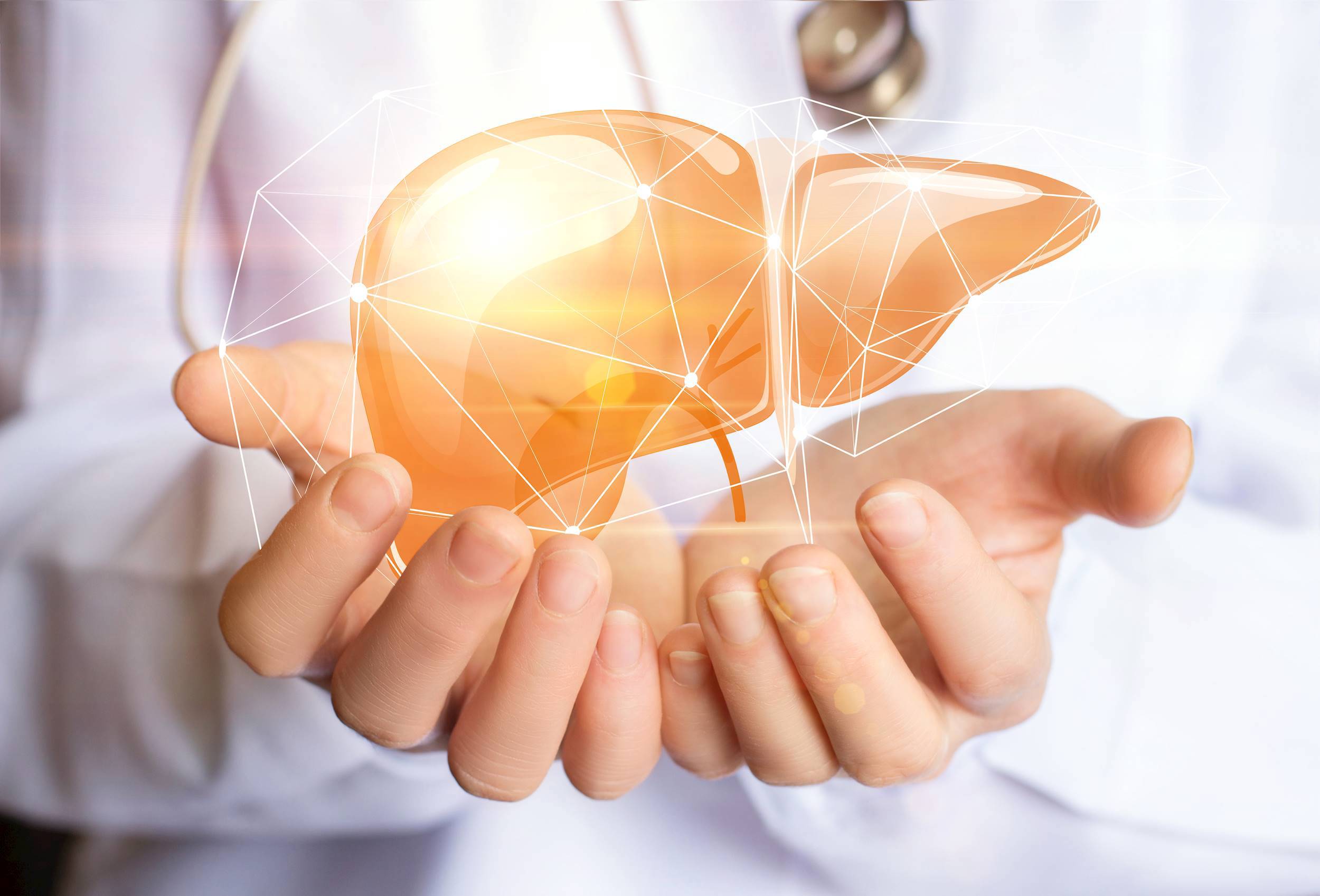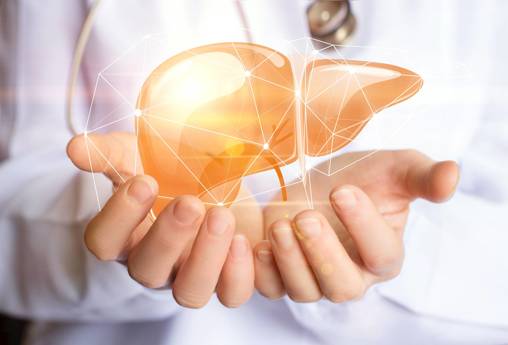MCTs and the Liver
Damon Dalrymple, ABITEC "Studies show that not only do MCTs protect the liver from steatosis but, with the addition of vitamin E, can actually reverse alcoholic liver injury."
Liver disease caused by the over-consumption of alcohol remains a large problem in the US and worldwide. Generally, there are four stages of alcoholic liver disease (ALD): steatosis, steatohepatitis, cirrhosis, and combined steatohepatitis and cirrhosis [1]. All but the latest stages are reversible [1, 2]. Numerous hypotheses exist for the pathogenesis of ALD - centrilobular hypoxia [3], inflammatory cell infiltration, cytotoxicity of aldehyde and other protein adducts [4], the involvement of proinflammatory cytokines induced by endotoxin [4, 5], and a prominent role of the immune system are just a few [6]. A long-standing hypothesis that has sparked some continued research is the role that the diet plays in the development of or protection from ALD [5, 7].
The basis for such scrutiny was the knowledge of alcohol (ethanol), its place in the diet, and its effect on nutrition. Ethanol has a greater calorie count per gram than either carbohydrates or proteins and provides an abundant source of energy [8, 9]. Unfortunately, the over-consumption of ethanol, while providing calories, displaces - or even degrades - nutrients, resulting in a state of malnutrition [8, 9]. This realization has resulted in traditional ALD treatments involving nutritional support; however, supplementation to correct nutritional deficiencies of heavy drinkers did not prevent the progression to the first stage of ALD – steatosis (or fatty liver). Subsequent studies demonstrated that even in the face of adequate nutrition, ingestion of 35% of the calories from alcohol of a nutritionally complete diet, will result in alcoholic fatty liver in both rats and humans [10, 11] and that these changes begin to occur after a single large dose of alcohol [12, 13].


In rats and in humans, a fat-containing diet combined with alcohol consumption will result in fatty changes in the liver compared with those subjects on a low-fat diet [14]. A further complication to the development of alcoholic fatty liver is the type of fat ingested. Lieber demonstrated, in 1967, that rats fed a diet of 36% of the calories as ethanol combined with 41% of the calories as corn/olive oil (LCT) or MCT has vastly different effects on the amount of triglycerides stored in the liver [7]. Rats on an ethanol/LCT diet had 8X the triglycerides compared to control rats (sucrose diet) whereas the ethanol/MCT group had only 3X liver triglyceride level of control [7].
It was further demonstrated that unsaturated fatty acids (LCTs) in the diet affect the tight junctions in the gut endothelium that is further exacerbated by ethanol significant increases in plasma lipopolysaccharide (an endotoxin). Lipopolysaccharide levels in the blood reflect the integrity of the intestinal barrier. This effect is mitigated by the consumption of saturated fatty acids (MCTs)[5] likely due to MCTs protective effect on the gut and liver in the face of LPS assault [15].


In 1996, Nanji et al showed that not only do MCTs protect the liver from steatosis but, with the addition of vitamin E, saturated fats fed as as MCTs can actually reverse alcoholic liver injury [16] but that high doses of vitamin E alone are not protective [17]. The authors hypothesize that this is likely due to a down-regulation of lipid peroxidation and perhaps the propensity of MCTs for oxidation rather than esterification [16]. Additionally, dietary saturated fatty acids can reverse histological changes due to alcohol in rat livers [16] even in the face of continued alcohol ingestion [18] but that diets containing polyunsaturated fatty acids – especially linoleic acid – with ethanol promote liver injury [19-22].
References:
- French SW, Alcoholic Liver Disease Molecular Pathology of Liver Diseases, S.P.S. Monga, Editor. 2011, Springer US. p. 511-526.
- Lane BP and Lieber CS. Ultrastructural alterations in human hepatocytes following ingestion of ethanol with adequate diets. Am J Pathol 1966;49(4):593-603.
- French SW. Biochemical basis for alcohol-induced liver injury. Clinical biochemistry 1989;22(1):41-9.
- Albano E. Role of adaptive immunity in alcoholic liver disease. International journal of hepatology 2012;2012:893026.
- Kirpich IA, Feng W, Wang Y, et al. The type of dietary fat modulates intestinal tight junction integrity, gut permeability, and hepatic toll-like receptor expression in a mouse model of alcoholic liver disease. Alcohol Clin Exp Res 2012;36(5):835-46.
- Duryee MJ, Klassen LW, and Thiele GM. Immunological response in alcoholic liver disease. World journal of gastroenterology : WJG 2007;13(37):4938-46.
- Lieber CS, Lefevre A, Spritz N, et al. Difference in hepatic metabolism of long- and medium-chain fatty acids: the role of fatty acid chain length in the production of the alcoholic fatty liver. The Journal of clinical investigation 1967;46(9):1451-60.
- Lieber CS. Relationships between nutrition, alcohol use, and liver disease. Alcohol research & health : the journal of the National Institute on Alcohol Abuse and Alcoholism 2003;27(3):220-31.
- Lieber CS. New concepts of the pathogenesis of alcoholic liver disease lead to novel treatments. Current gastroenterology reports 2004;6(1):60-5.
- Lieber CS, Jones DP, and Decarli LM. Effects of prolonged ethanol intake: Production of fatty liver despite adequate diets. The Journal of clinical investigation 1965;44:1009-21.
- DeCarli LM and Lieber CS. Fatty liver in the rat after prolonged intake of ethanol with a nutritionally adequate new liquid diet. The Journal of nutrition 1967;91(3):331-6.
- Iseri OA, Lieber CS, and Gottlieb LS. The ultrastructure of fatty liver induced by prolonged ethanol ingestion. Am J Pathol 1966;48(4):535-55.
- Lieber CS, Spritz N, and DeCarli LM. Role of dietary, adipose, and endogenously synthesized fatty acids in the pathogenesis of the alcoholic fatty liver. The Journal of clinical investigation 1966;45(1):51-62.
- Lieber CS and Spritz N. Effects of prolonged ethanol intake in man: role of dietary adipose, and endogenously synthesized fatty acids in the pathogenesis of the alcoholic fatty liver. The Journal of clinical investigation 1966;45(9):1400-11.
- Kono H, Fujii H, Asakawa M, et al. Protective effects of medium-chain triglycerides on the liver and gut in rats administered endotoxin. Annals of surgery 2003;237(2):246-55.
- Nanji AA, Yang EK, Fogt F, et al. Medium chain triglycerides and vitamin E reduce the severity of established experimental alcoholic liver disease. J Pharmacol Exp Ther 1996;277(3):1694-700.
- Sadrzadeh SM, Meydani M, Khettry U, et al. High-dose vitamin E supplementation has no effect on ethanol-induced pathological liver injury. J Pharmacol Exp Ther 1995;273(1):455-60.
- Nanji AA, Jokelainen K, Tipoe GL, et al. Dietary saturated fatty acids reverse inflammatory and fibrotic changes in rat liver despite continued ethanol administration. J Pharmacol Exp Ther 2001;299(2):638-44.
- Nanji AA and French SW. Dietary linoleic acid is required for development of experimentally induced alcoholic liver injury. Life sciences 1989;44(3):223-7.
- Nanji AA, Mendenhall CL, and French SW. Beef fat prevents alcoholic liver disease in the rat. Alcohol Clin Exp Res 1989;13(1):15-9.
- Nanji AA, Sadrzadeh SM, and Dannenberg AJ. Liver microsomal fatty acid composition in ethanol-fed rats: effect of different dietary fats and relationship to liver injury. Alcohol Clin Exp Res 1994;18(4):1024-8.
- Nanji AA, Zakim D, Rahemtulla A, et al. Dietary saturated fatty acids down-regulate cyclooxygenase-2 and tumor necrosis factor alfa and reverse fibrosis in alcohol-induced liver disease in the rat. Hepatology 1997;26(6):1538-45.
CAPTEX® is a registered trademark of ABITEC Corporation. All information and statements given on this blog are believed to be accurate at the time of publication. However, neither ABITEC Corporation nor any of their affiliates make any representations or warranty with respect thereto, including, but not limited to, any results obtained in the processing of the products by customers or any third party. All information and statements are intended for persons having the required skill and know-how and do not relieve the customer or user from verifying the suitability of information and statements given for a specific purpose prior to use of the products. It is entirely the obligation of the customer or user to comply with applicable laws and regulations, and also with all patent or other intellectual property rights of third parties. ABITEC CORPORATION EXPRESSELY DISCLAIMS ANY REPRESENTATIONS OR WARRANTIES OF ANY KIND, WHETHER EXPRESSED OR IMPLIED, AS TO THE ACCURACY, CURRENCY, COMPLETENESS AND/OR THE MERCHANTABILITY OR FITNESS OF A PARTICULAR PURPOSE OF ANY INFORMATION CONTAINED ON THIS BLOG AND/OR PRODUCT DESCRIBED OR PROMOTED ON THIS BLOG, INCLUDING WARRANTIES WITH RESPECT TO INFRINGEMENT OF ANY PATENT, COPYRIGHT, OR OTHER RIGHTS OF A THIRD PARTY. We reserve the right to change product specifications and specified properties of the products without prior notice.

